
- For PC
- For MAC
- For Linux
- OS: Windows 10 (64 bit)
- Processor: Dual-Core 2.2 GHz
- Memory: 4GB
- Video Card: DirectX 11 level video card: AMD Radeon 77XX / NVIDIA GeForce GTX 660. The minimum supported resolution for the game is 720p.
- Network: Broadband Internet connection
- Hard Drive: 23.1 GB (Minimal client)
- OS: Windows 10/11 (64 bit)
- Processor: Intel Core i5 or Ryzen 5 3600 and better
- Memory: 16 GB and more
- Video Card: DirectX 11 level video card or higher and drivers: Nvidia GeForce 1060 and higher, Radeon RX 570 and higher
- Network: Broadband Internet connection
- Hard Drive: 75.9 GB (Full client)
- OS: Mac OS Big Sur 11.0 or newer
- Processor: Core i5, minimum 2.2GHz (Intel Xeon is not supported)
- Memory: 6 GB
- Video Card: Intel Iris Pro 5200 (Mac), or analog from AMD/Nvidia for Mac. Minimum supported resolution for the game is 720p with Metal support.
- Network: Broadband Internet connection
- Hard Drive: 22.1 GB (Minimal client)
- OS: Mac OS Big Sur 11.0 or newer
- Processor: Core i7 (Intel Xeon is not supported)
- Memory: 8 GB
- Video Card: Radeon Vega II or higher with Metal support.
- Network: Broadband Internet connection
- Hard Drive: 62.2 GB (Full client)
- OS: Most modern 64bit Linux distributions
- Processor: Dual-Core 2.4 GHz
- Memory: 4 GB
- Video Card: NVIDIA 660 with latest proprietary drivers (not older than 6 months) / similar AMD with latest proprietary drivers (not older than 6 months; the minimum supported resolution for the game is 720p) with Vulkan support.
- Network: Broadband Internet connection
- Hard Drive: 22.1 GB (Minimal client)
- OS: Ubuntu 20.04 64bit
- Processor: Intel Core i7
- Memory: 16 GB
- Video Card: NVIDIA 1060 with latest proprietary drivers (not older than 6 months) / similar AMD (Radeon RX 570) with latest proprietary drivers (not older than 6 months) with Vulkan support.
- Network: Broadband Internet connection
- Hard Drive: 62.2 GB (Full client)
There are all kinds of different War Thunder pilots, and each player has their own preferences in choosing vehicle classes and specific vehicles. In striving to meet the needs of all players, we’re trying to add vehicles of various classes and designs to the game. In update 1.59, one of the most significant serial production vehicles added to the game will be the legendary British four-engine bomber, the Handley Page Halifax B.III. This aircraft served with the Allied air force for almost the entirety of the war and has an impressive service record.
The design for this bomber began long before the beginning of World War II. The task to develop an aircraft that fulfilled the requirements began back in 1935, when the RAF sought a replacement for the series-produced Armstrong Whitworth A.W.38 Whitley. The new four-engine aircraft had to have a long range and was designed with a view to completing missions during the night. Initially, the maximum wingspan of the aircraft was limited to the traditional 100 ft (30.5 metres); British command placed this requirement on all aircraft of the time, in order to make them easier to transport and store in hangars.
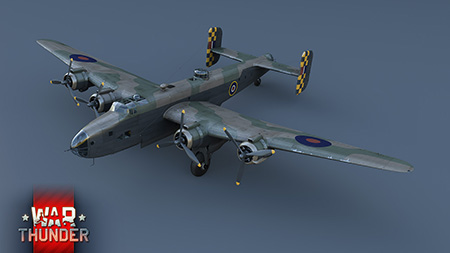 |
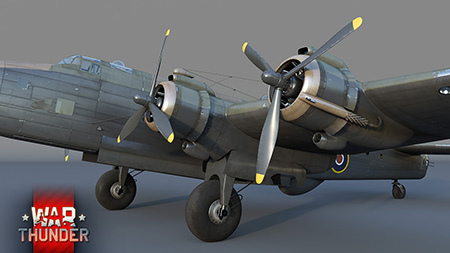 |
The first-series Halifax aircraft left the factory in 1940 where their first combat took place in 1941, when on the night of March the 10th, six aircraft flew to a port in Le Havre occupied by German troops. The Halifax III, which will be first to appear in our game in update 1.59, is the later and most mass-produced version of the aircraft, having been put into series production in 1943. Some of the key changes in comparison to the earlier versions are the air-cooled Bristol Hercules engine, increased defensive weaponry and improved aerodynamics: the Halifax B.III was cured of a common illness among bombers: poor durability leading to a spin when both engines on one side fail.
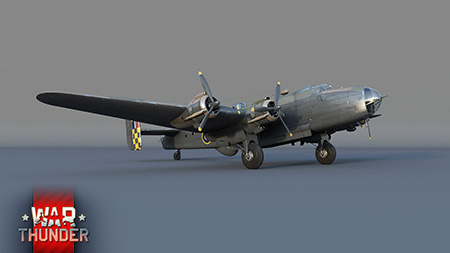 |
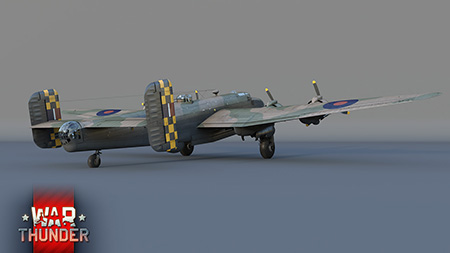 |
The Halifax’s bomb load is impressive: the aircraft can carry almost five tons of varying size bombs on its internal and external bomb mounts. With such a mass of bombs, the aircraft becomes a deciding factor on the battlefield, where victory often depends on the effective and timely destruction of enemy bases. Among the bomber’s weaknesses is its far from outstanding maximum speed – a little more than 280 mph (450 km/h) at a height of roughly 13100 ft (4000 m).
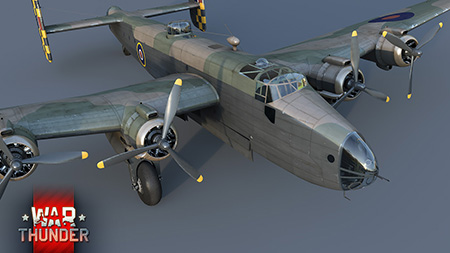 |
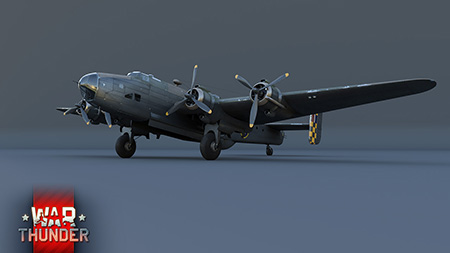 |
However, in exchange, even at rank II this aircraft has good survivability and powerful defensive weaponry provided by nine 7.7 mm Browning .303 machine guns. Four of them are housed in a rear turret (with an ammunition complement of 6800 shots), another four – in a fuselage turret (2400 shots) and one 7.7 mm Vickers K is mounted on the nose. The sole serious weakness in the aircraft’s defensive weaponry is its lack of lower turrets, which means that the player has to avoid exposing the underside of their aircraft to enemy fire by veering away.

Download Wallpaper :1280x1024 | 1920x1080 | 2560x1440
The Handley Page Halifax B.III will arrive in the game with update 1.59. Look out for this bomber in the virtual skies of War Thunder. See you on the battlefield!
Upcoming content for Update 1.59 "Flaming Arrows" :
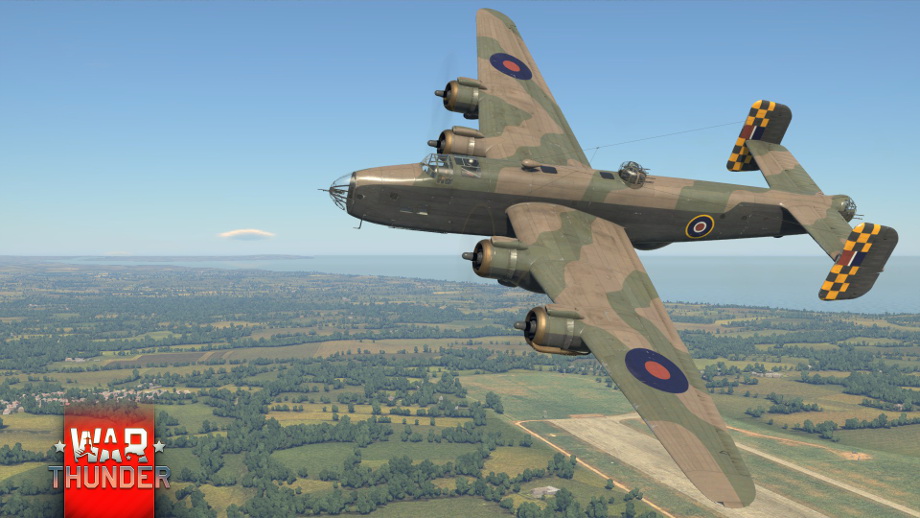
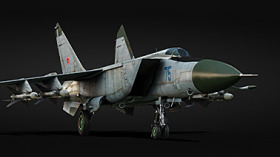

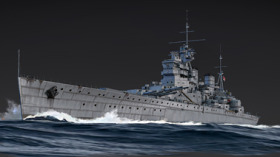

Comments (70)
This is great but to the publicity team, can u please learn to use the right terms. For example there was no Allied Air Force as you put it, a turret does not have 6800 shots, instead it carries 6800 "rounds" and a turret on top of the fuselage is called a Dorsal turret. I know this all seems quite petty and silly but WT is marketed on realism and attention to detail (as much as is possible) and none of that is exhibited in your post. Maybe u need to have someone who knows about the topic.
Glad to see there are some 'real' vehicles (Halifax and Pz IIIB) coming in 1.59 and it isn't all prototypes and rocket-tanks (that I would rather not have in the game at all).
Oh, just GREAT - another strategic bomber to drop tons of bombs on my tank in a CAS role. OK, OK, you have to have them in the game but NOT on the battlefield!!!!!!!!! All this "realism" in designing tanks then toss it out the window with strategic bombers.
Understand your pain, though in reality once air superiority had been established in Western Europe, the British Heavies were flying combat support missions. So it's not entirely without historical precedent!
When will we be getting the B-24J, P-47 and P-51 Razorbacks, and the B-32 Dominator?
Very happy to see the British tree getting more attention, and this was a notable omission. Very much looking forward to it. Can't wait...
Submit a complaint